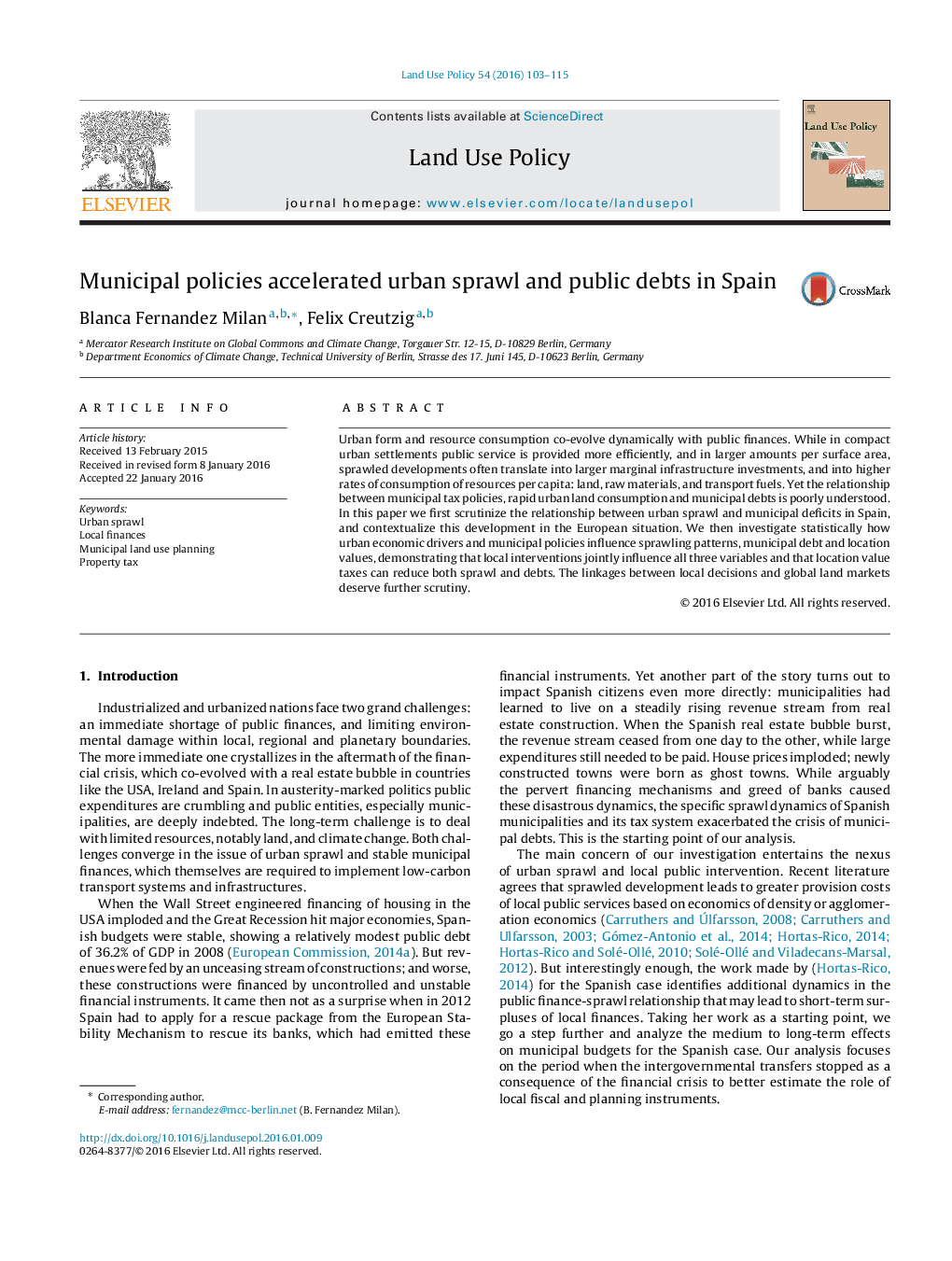| Article ID | Journal | Published Year | Pages | File Type |
|---|---|---|---|---|
| 6547305 | Land Use Policy | 2016 | 13 Pages |
Abstract
Urban form and resource consumption co-evolve dynamically with public finances. While in compact urban settlements public service is provided more efficiently, and in larger amounts per surface area, sprawled developments often translate into larger marginal infrastructure investments, and into higher rates of consumption of resources per capita: land, raw materials, and transport fuels. Yet the relationship between municipal tax policies, rapid urban land consumption and municipal debts is poorly understood. In this paper we first scrutinize the relationship between urban sprawl and municipal deficits in Spain, and contextualize this development in the European situation. We then investigate statistically how urban economic drivers and municipal policies influence sprawling patterns, municipal debt and location values, demonstrating that local interventions jointly influence all three variables and that location value taxes can reduce both sprawl and debts. The linkages between local decisions and global land markets deserve further scrutiny.
Keywords
Related Topics
Life Sciences
Agricultural and Biological Sciences
Forestry
Authors
Blanca Fernandez Milan, Felix Creutzig,
